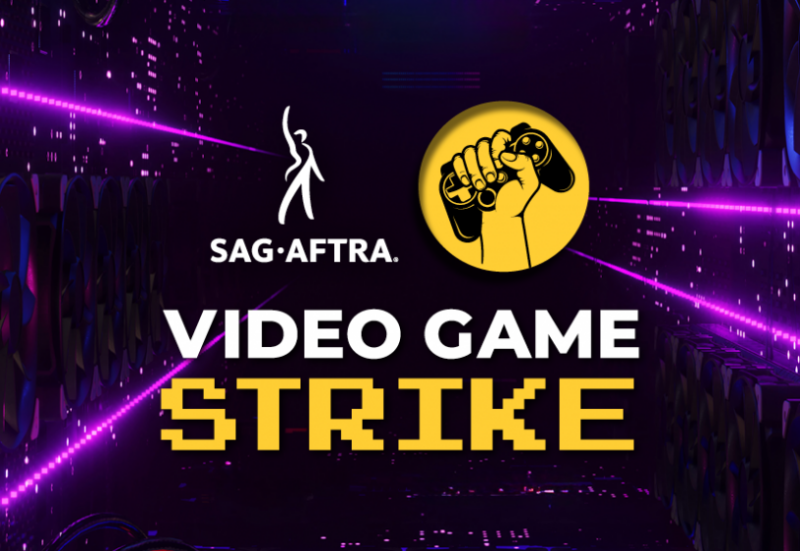Speaking into the large language model —
Use of motion-capture actors’ performances for AI training is a sticking point.

Enlarge / One day, using pixellated fonts and images to represent that something is a video game will not be a trope. Today is not that day.
SAG-AFTRA has called for a strike of all its members working in video games, with the union demanding that its next contract not allow “companies to abuse AI to the detriment of our members.”
The strike mirrors similar actions taken by SAG-AFTRA and the Writers Guild of America (WGA) last year, which, while also broader in scope than just AI, were similarly focused on concerns about AI-generated work product and the use of member work to train AI.
“Frankly, it’s stunning that these video game studios haven’t learned anything from the lessons of last year—that our members can and will stand up and demand fair and equitable treatment with respect to A.I., and the public supports us in that,” Duncan Crabtree-Ireland, chief negotiator for SAG-AFTRA, said in a statement.
During the strike, the more than 160,000 members of the union will not provide talent to games produced by Disney, Electronic Arts, Blizzard Activision, Take-Two, WB Games, and others. Not every game is affected. Some productions may have interim agreements with union workers, and others, like continually updated games that launched before the current negotiations starting September 2023, may be exempt.
The publishers and other companies issued statements to the media through a communications firm representing them. “We are disappointed the union has chosen to walk away when we are so close to a deal, and we remain prepared to resume negotiations,” a statement offered to The New York Times and other outlets read. The statement said the two sides had found common ground on 24 out of 25 proposals and that the game companies’ offer was responsive and “extends meaningful AI protections.”
The Washington Post says the biggest remaining issue involves on-camera performers, including motion capture performers. Crabtree-Ireland told the Post that while AI training protections were extended to voice performers, motion and stunt work was left out. “[A]ll of those performers deserve to have their right to have informed consent and fair compensation for the use of their image, their likeness or voice, their performance. It’s that simple,” Crabtree-Ireland said in June.
It will be difficult to know the impact of a game performer strike for some time, if ever, owing to the non-linear and secretive nature of game production. A game’s conception, development, casting, acting, announcement, and further development (and development pivots) happen on whatever timeline they happen upon.
SAG-AFTRA has a tool for searching game titles to see if they are struck for union work, but it is finicky, recognizing only specific production titles, code names, and ID numbers. Searches for Grande Theft Auto VI and 6 returned a “Game Over!” (i.e., struck), but Kotaku confirmed the game is technically unaffected, even though its parent publisher, Take-Two, is generally struck.
Video game performers in SAG-AFTRA last went on strike in 2016, that time regarding long-term royalties. The strike lasted 340 days, still the longest in that union’s history, and was settled with pay raises for actors while residuals and terms on vocal stress remained unaddressed. The impact of that strike was generally either hidden or largely blunted, as affected titles hired non-union replacements. Voice work, as noted by the original English voice for Bayonetta, remains a largely unprotected field.